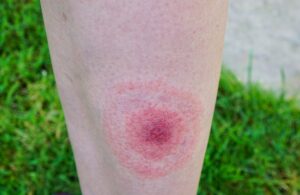
If there is warm weather, overheating can occur, and animals do not really have the option to move to places that are cooler instantly. Thus, it can get complicated for them to be able to regulate their body temperature. Furthermore, common pets such as cats and dogs are also susceptible to getting heatstroke.
It can be life-threatening, too, and you may notice severe consequences for the animal. The consequences might include failure of organs, or the animal might even die in severe cases. In Maple Valley, there are many animal care services where you can get your pet treated.
Overheating can take place for various reasons; try not to let your pet go for excessive exercise as their body can heat up quickly. As far as dogs are concerned, it is not really important that they have a specific breed or age to suffer from heatstroke.
Take good care of your pets and ensure they remain safe outside. Especially when the weather outside is hot or humid, you need to be extra cautious. Contact an animal hospital in Maple Valley, WA, in case of any emergency.
Which are the animals that are more susceptible to getting heatstroke?
Some animals might be more prone to suffer from heatstroke; let us look at the various criteria:
- Overweight animals are at greater risk.
- Cats, dogs, or any other animal with thick fur can get heat stroke quickly.
- If the animal already has a pre-existing condition, it will be more susceptible.
- Persian cats or other flat-faced breed animals can also get heatstroke.
What can lead to heatstroke in pets?
Hot weather is not a necessary condition for an animal to suffer heat stroke. If the weather is warm, and the animal is left in a place that does not have proper ventilation, that can also pose a problem. While avoidance is considered good and is a better way to cope with a heat stroke, there are also sure signs that one should know.
It will let you manage a heat stroke more appropriately, and the pet can be treated in the proper manner, too. You will also have an idea of when you should consider seeking veterinary attention.
What are the signs of heatstroke in animals?
There are various early signs that can help you recognize a heat stroke in animals; let us look at them:
- Animals might start to sniff, and the pace can increase as the condition worsens.
- They may look for shade or water; restlessness will be apparent. They may also get agitated.
- Tongue and gums might turn red.
- Heart rate can also increase.
- Drooling becomes more frequent.
- Diarrhea and vomiting can also be noted.
If the heatstroke makes it to advanced stages, you may notice the following:
- Confusion in your pet.
- They may collapse, or weakness can be observed, too.
- Lethargy is also there.
- Animals can experience seizures in the worst cases.
What are the tips for first aid in animals?
If you think your pet may experience overheating, you are going to have to act immediately in such situations. Let us look at various things that you can do:
- Take the pet to an area that is adequately ventilated so that it feels cool.
- Give them water but in small sips, but do not forcefully make them drink water.
- You can also pour water on your pet; the water should be more remarkable than the temperature of your pet.
- Do not go for ice-cold water.
Once you are done doing these things, call your vet as soon as possible and get to know what to do next.
Seek proper care from a veterinarian!
While specific measures can be taken in emergency situations, once the problem is in control, it is essential that you take the pet to the veterinarian for a proper checkup. Do not let it slide, as there might be some underlying condition that led to the heatstroke. Thus, seeking proper care from a professional is essential.








